
Mekong’s treasure trove
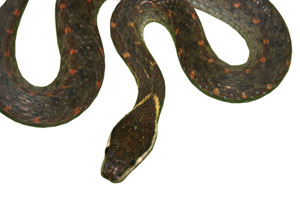 |
|
A new species of reptile |
The marvels of the natural world
have never failed to mesmerise us from time immemorial. From the depths
of the oceans, the centre of the Earth, to space and beyond, what the
scientists and naturalists have discovered so far are mind boggling.
With each new discovery made, the quest to unravel the mysteries and
secrets of the world around us grows; more and more research and
expeditions are carried out to explore and discover new things. And,
thanks to such efforts we are now aware of the many wonders of the
world...
 |
|
A shocking
pink spiny dragon millipede |
However, not all the mysteries of this world have been unravelled.
New species of fauna and flora, geographical and astronomical phenomena
and mysterious signs and objects are yet to be discovered, as there are
many regions on our Planet Earth that have not yet been explored.
 |
|
Laotian rock
rat |
One such region said to be rich in bio-diversity is the Amazon basin;
many endemic plants and animals, including pink dolphins have been
introduced to the world from the areas that have so far been explored by
naturalists. We do not know what more lies hidden in the thickets of the
Amazon jungles or the depths of the winding Amazon river.
As you may know, the Amazon jungle is not the only region rich in
bio-diversity. There are other such places in the world. The Greater
Mekong region is such an area. In fact, it is one of the last,
scientifically unexplored regions.
It covers six countries through which the river Mekong flows; namely
Cambodia, Thailand, Myanmar (Burma), Laos, Vietnam and the southern
Chinese provinces of Yunnan. It is made up of 600,000 square kilometres
of wetlands and rainforests, along the 2,800 miles of the river.
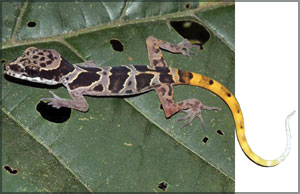 |
|
Acolourful
species of lizard |
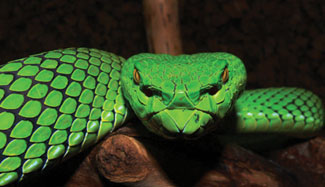 |
|
Green pit
viper |
According to recent reports released by the World Wildlife Fund (WWF),
over thousand new species of fauna and flora have been discovered from
this region alone, within the past decade, averaging two new species a
week.
The discoveries made so far are simply amazing! Just like the pink
dolphins of the Amazons, a spiny dragon millipede which is also a
shocking pink in colour and has glands that produces cyanide had been
discovered in this region. Scientists believe that the vivid colour is a
warning to predators that it is deadly to the bite.
Another surprising discovery had been the Laotian rock rat which was
believed to have become extinct 11 million years ago. However, this
particular creature had not been discovered initially in the jungles,
but in a food market in Laos where it was served as food roasted on a
skewer. It was known to locals as Khan you.
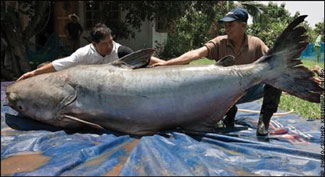 |
|
The giant
Mekong catfish discovered sometime back. |
The other notable discoveries are the world’s largest huntsman spider
with a leg span of 12 inches or 30 cm - the size of a dinner plate! (It
is considered to be the most remarkable of 88 new species of spiders
found in Laos), the Annamite striped rabbit with brown and black fur
(which is the second striped rabbit identified), the Siamese Peninsular
Pit Viper, two types of muntjac deer (one species identified from the
skull and descriptions given by locals) and a wolf snake.
 |
|
Another
species of lizard |
Cantor’s Giant softshell turtle, thought to be extinct in Cambodia
since 2003 had also been rediscovered in a section of the Mekong River,
almost untouched by humans.
The 55 kilometre stretch of river located in north-eastern Cambodia
is referred to as the ‘Central Section’ and is a sanctuary for many
vulnerable fauna - 36 of which are listed as threatened under the IUCN
Red List, according to reports.
The new discoveries documented so far include 519 plants, 279 fish,
88 frogs, 22 snakes, 46 lizards, 15 mammals, four turtles, four birds,
two salamanders and a toad.
Just imagine what a treasure trove lies hidden in this unique region
which is rapidly changing geographically due to development. The WWF
claims that about 16 of its 200 listed global ecoregions which are
critical landmarks of internal biological importance, are found in the
Greater Mekong.
As the Greator Mekong region is subject to development and the
valuable biodiversity could be destroyed, scientists and naturalists
urge the governments to take immediate measures to protect and preserve
the area.
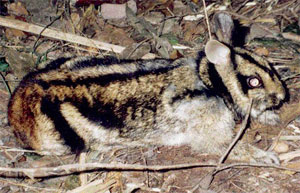 |
|
Annamite
striped rabbit |
They say that the Greater Mekong is home to about 20,000 plant
species; 1,200 birds, 800 reptiles and amphibians and 430 mammals. In
addition to the rare irrawaddy dolphins, the Mekong River is home to
1,300 species of fish which includes the giant Mekong catfish, one of
the world’s largest freshwater fish.
The Mekong River is considered to be one of the richest waterways for
biodiversity on the planet, by length, with more species occurring
nowhere else found per unit, than in the Amazon River.
Going by these recent discoveries in the Mekong, we can look forward
to the discovery of more new species of fauna and flora from this region
and also other unexplored regions of the world in the near future. So,
be on the look out, the world around us is full of beautiful as well as
bizarre creatures we have never even imagined to exist.
How plants and animals are named
Have you ever wondered how scientists come up with various kinds of
names to identify the numerous animal or plant species they discover
around the world? Let’s explore a little bit about this interesting
subject.
The scientists’ method of classifying the animals with special names
is known as taxonomy.
It is more of an art than a science and there is actually no set
rules, with many scientists, naturalists and researchers disagreeing on
various taxonomical names. Primarily, these names are just a method for
biologists to identify animals and know precisely which animal they are
referring to, when in conversation about a specific animal.
Taxonomical names are usually not the popular names of animals we are
familiar with and are always in Latin. Now, if you are curious as to why
these names should be given in Latin, a language which is not in general
use today, the reason is that it was decided long ago by the scientists
at a time when Latin was widely used. So, even today, when any new
species are discovered, the scientists stick to the old method when
giving biological names.
How do they come up with these biological names?
Well, usually a biological name is given to an animal after a
physical trait or habit. Sometimes the new-found species are named after
the scientist who discovered it or after a family member of his/hers.
The biological name of a species usually comprises two names. The
first name denotes the genus (it’s capitalised) and the second, the
particular species (not capitalised). For example the big wild cats (or
roaring cats) all belong to the genus Panthera.
The leopard is Panthera pardus, lion - Panthera leo, jaguar -
Panthera onca and tiger-Panthera tigris. The newly discovered shocking
pink millipede was named Desmoxytes purpurosea, the huntsman spider,
Heteropoda maxima and the rock rat as Laonastes aenigmamus.
So, the name of any species consists of two words, almost like our
surname (or family name) and given name. Now, let’s see how a species is
defined; it is the natural grouping of animals of a common ancestry,
with a reasonably close physical resemblance that interbreed and produce
fertile offspring.The relationship between various species are shown by
grouping them into genera (plural of genus) which are then grouped into
a family.
Thereafter, the related families are grouped into an order and the
orders are grouped into a class. Subdivisions are also used.
More than 20 orders of mammals have been recognised todate.
So, now you know how the wide variety of animal and plant species
discovered by scientists are given names, some of which sound funny and
weird! |


